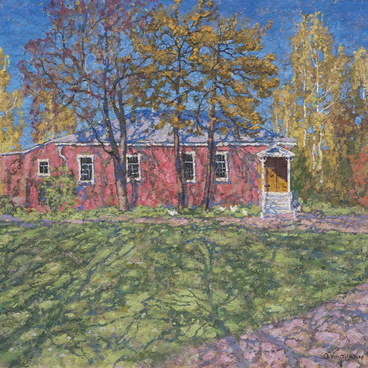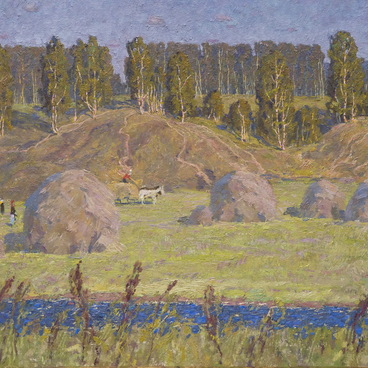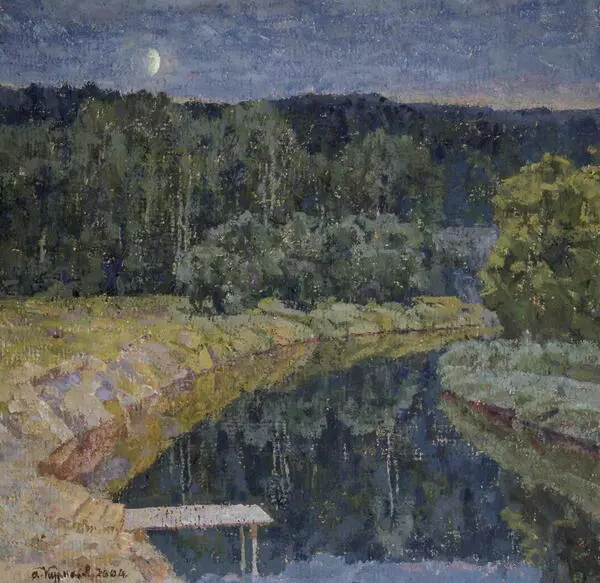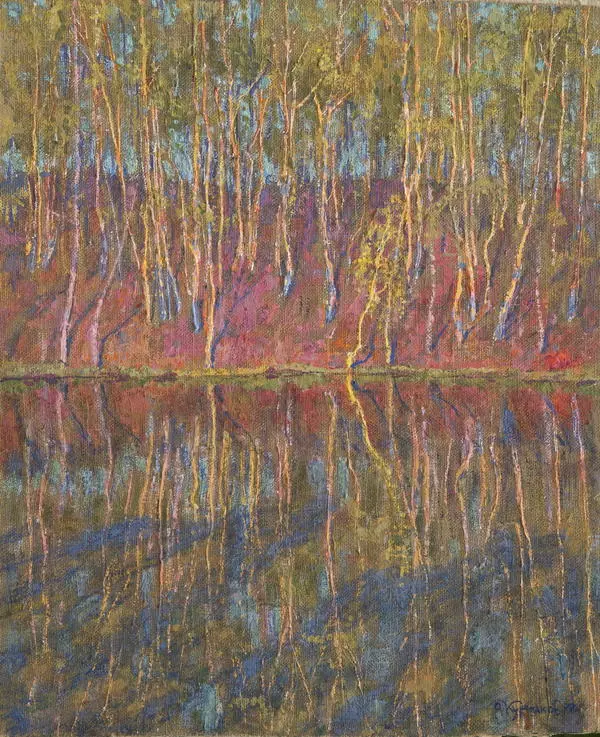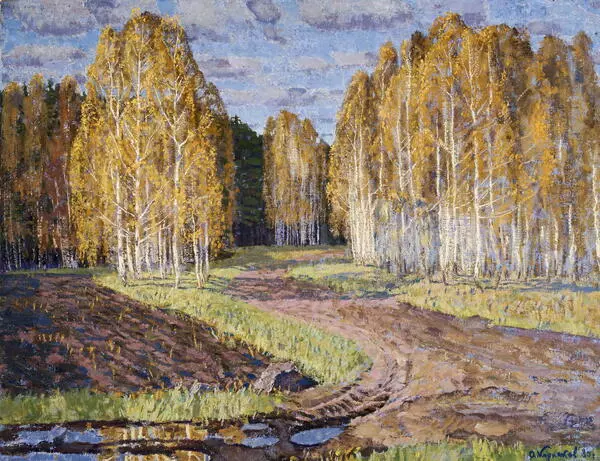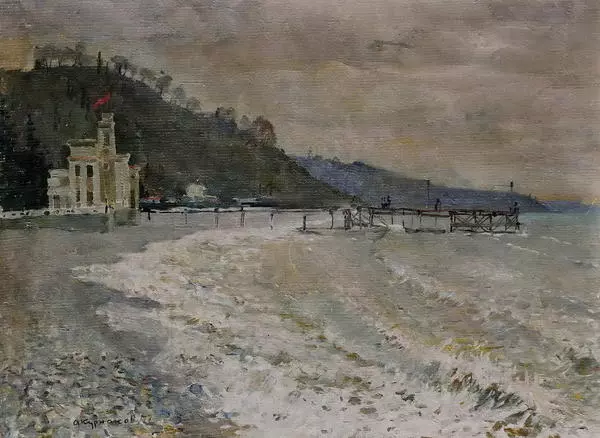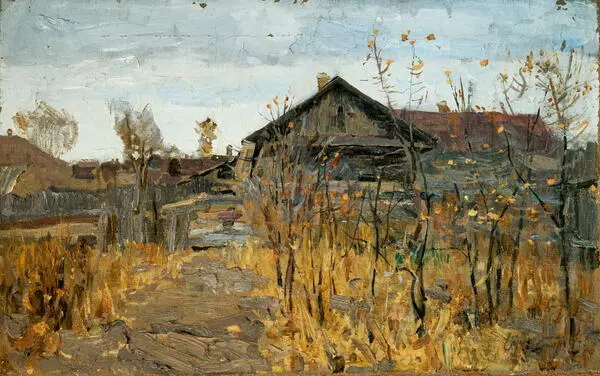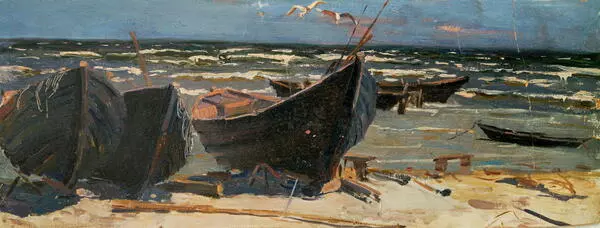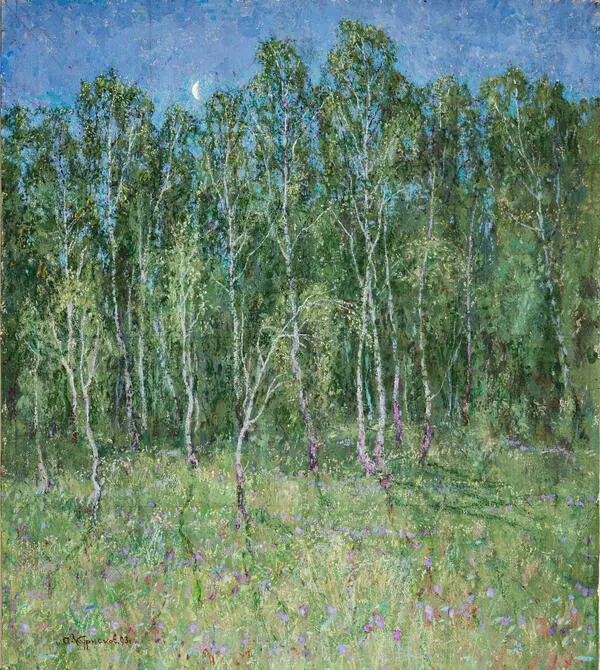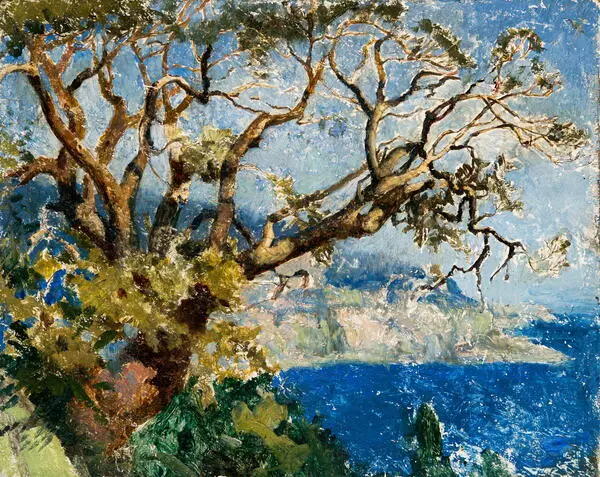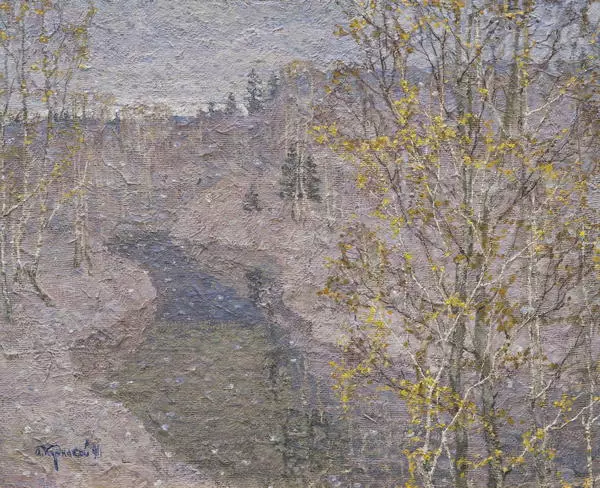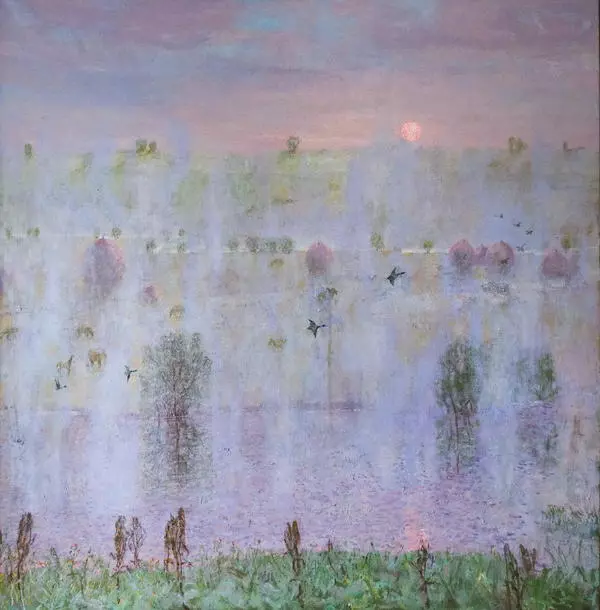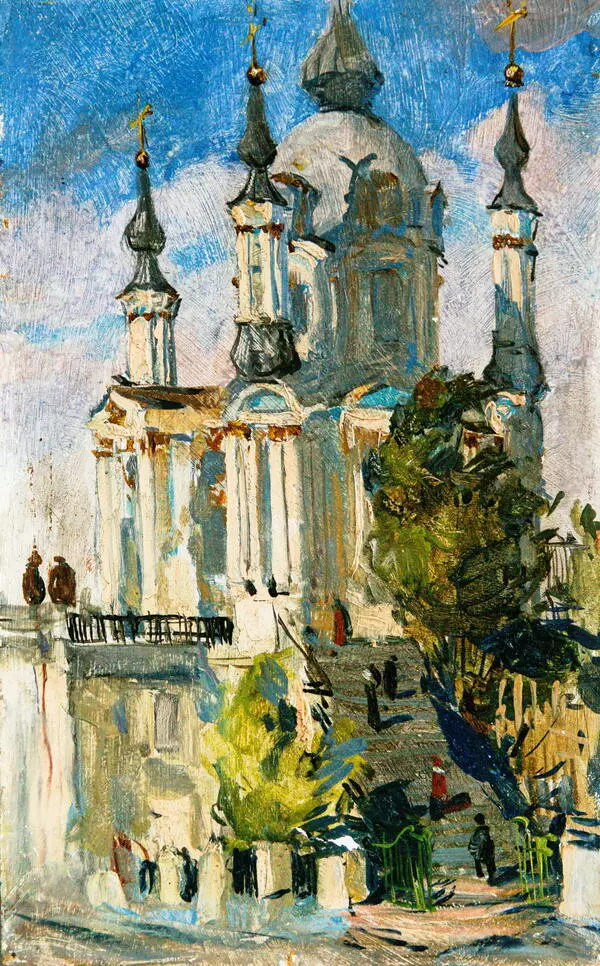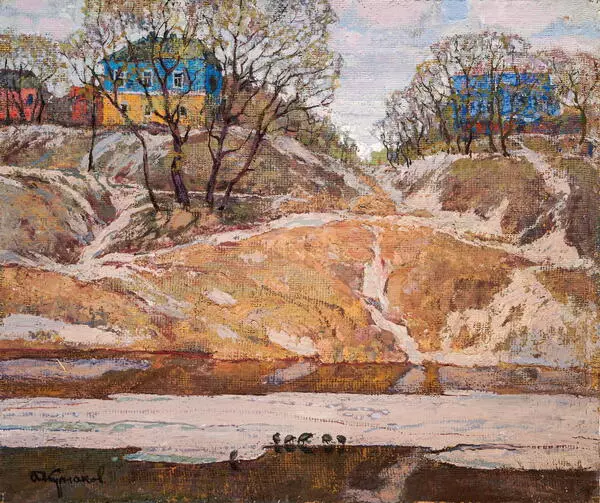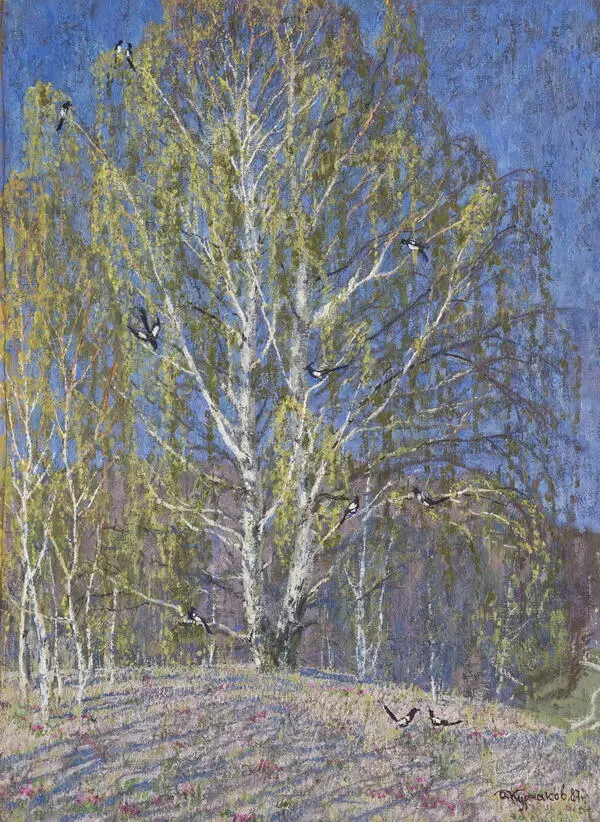Before us is an autumnal still life. We can even assume that it is October or the beginning of November, because guelder looks so bright and juicy exactly at this time. On a plank horizontal plane of gray-blue color, more looking like the surface of a rustic table, located at an angle to the lower edge of the work, glass vessels of different sizes are depicted, filled with water, with guelder branches and flowers.
In the foreground, there are separate berries, leaves and a truss of guelder, next to it there is a small glass tumbler with a branch of a guelder, and the same branches are in two more glass vessels, half filled with water.
In a three-liter greenish glass jar, there is a bouquet of muted lilac flowers with a prominent core and juicy green leaves - such are the autumn asters. The entire still life is painted against a yellow-brown drapery, similar to a window curtains.
Still life was one of the favorite genres in painting for Andrei Ilyich Kurnakov. The artist always turned to it throughout his creative work. He often painted fresh and dried flowers, mushrooms, various branches. There is a whole collection of different objects in his studio, which he often used to paint his still lifes, placing them next to flowers and fruits.
There are several works by the artist depicting guelder. This shrub attracted artists with its bright berries and beautiful crimson autumn foliage, and the people appreciated the medicinal properties of the bark of Viburnum opulus. Andrei Ilyich Kurnakov was very fond of all the gifts of nature, especially those collected in the forest, and very often he depicted them in his paintings.
Guelder (in Russian pronunciation kalina) was widely celebrated in songs, linked with the native land like the birch. The most famous - ‘Oh, the kalina is blooming’ – is not a folk song, as it is sometimes believed, but written by the Soviet songwriter Mikhail Vasilyevich Isakovsky, the author of the famous ‘Katyusha’, as a soundtrack for ‘Kuban Cossacks’ movie.
In this still life, the artist skillfully plays with light and shadow, depicting an invisible light source that gives a shadow from glass vessels on the surface of a stylized table. Maybe the autumn sun is shining through the invisible terrace window. The author of the picture uses tempera - an old painting technique and a variety of paint, in which one highlights some parts of the picture, making accents on them, while others darken them.
In the foreground, there are separate berries, leaves and a truss of guelder, next to it there is a small glass tumbler with a branch of a guelder, and the same branches are in two more glass vessels, half filled with water.
In a three-liter greenish glass jar, there is a bouquet of muted lilac flowers with a prominent core and juicy green leaves - such are the autumn asters. The entire still life is painted against a yellow-brown drapery, similar to a window curtains.
Still life was one of the favorite genres in painting for Andrei Ilyich Kurnakov. The artist always turned to it throughout his creative work. He often painted fresh and dried flowers, mushrooms, various branches. There is a whole collection of different objects in his studio, which he often used to paint his still lifes, placing them next to flowers and fruits.
There are several works by the artist depicting guelder. This shrub attracted artists with its bright berries and beautiful crimson autumn foliage, and the people appreciated the medicinal properties of the bark of Viburnum opulus. Andrei Ilyich Kurnakov was very fond of all the gifts of nature, especially those collected in the forest, and very often he depicted them in his paintings.
Guelder (in Russian pronunciation kalina) was widely celebrated in songs, linked with the native land like the birch. The most famous - ‘Oh, the kalina is blooming’ – is not a folk song, as it is sometimes believed, but written by the Soviet songwriter Mikhail Vasilyevich Isakovsky, the author of the famous ‘Katyusha’, as a soundtrack for ‘Kuban Cossacks’ movie.
In this still life, the artist skillfully plays with light and shadow, depicting an invisible light source that gives a shadow from glass vessels on the surface of a stylized table. Maybe the autumn sun is shining through the invisible terrace window. The author of the picture uses tempera - an old painting technique and a variety of paint, in which one highlights some parts of the picture, making accents on them, while others darken them.
